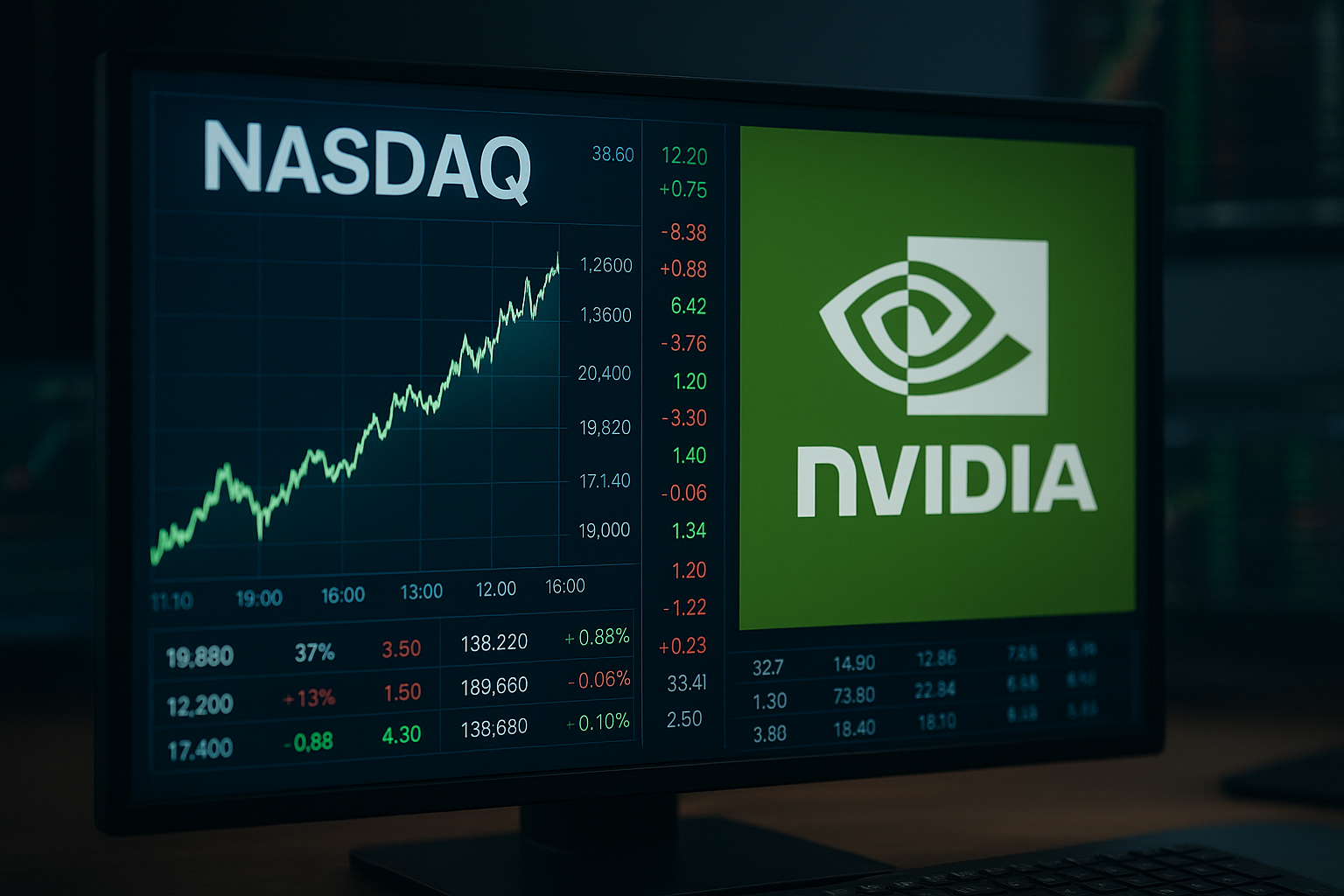Wall Street is bracing for one of the most pivotal weeks of the quarter as U.S. stock indexes hover near all-time highs, just days before a slew of major tech earnings and a critical Federal Reserve policy decision. With optimism running high and valuations stretched, investors are questioning whether the market’s rally can sustain its momentum — or if it’s about to meet resistance.
A Market Balanced on Expectations
As of Monday, S&P 500 futures were flat near record levels while the Nasdaq 100 hovered close to its July peak, according to Reuters (Oct. 28, 2025). The rally, driven by AI enthusiasm, resilient economic data, and expectations of rate cuts in early 2026, faces its next test with quarterly results from tech heavyweights like Apple ($AAPL), Microsoft ($MSFT), Alphabet ($GOOGL), Amazon ($AMZN), and Meta ($META).
Markets are pricing in perfection. Analysts at Goldman Sachs note that the “Magnificent 7” stocks now account for over 30% of the S&P 500’s market cap, raising questions about concentration risk and valuation sustainability. Meanwhile, the CBOE Volatility Index (VIX) remains subdued, suggesting investor complacency just as macro risks intensify.
Why This Matters for Investors
This week’s twin catalysts — earnings and monetary policy — will set the tone for the remainder of 2025. The Federal Reserve’s policy meeting on Wednesday is expected to keep rates unchanged, but traders will scrutinize the tone of Chair Jerome Powell’s comments for clues on timing of potential cuts.
“Markets are caught between strong growth and stubborn inflation,” said a Morgan Stanley strategist quoted by Bloomberg. “If Powell leans hawkish, it could trigger a risk-off move, especially in overextended tech valuations.”
Earnings, too, carry asymmetric risk. According to FactSet, S&P 500 companies are expected to report 5.8% earnings growth for Q3 — but many analysts warn the upside is already priced in. Any disappointment in forward guidance could lead to a rotation into defensive or value sectors such as utilities, healthcare, and industrials.
The Big Tech Crossroads
For tech giants, expectations couldn’t be higher. Microsoft is projected to post another strong cloud quarter, while Apple faces scrutiny over slowing iPhone demand and China headwinds. Amazon’s AWS division and Alphabet’s ad revenue will be key indicators of how AI spending and digital advertising trends are reshaping corporate growth trajectories.
Yet, beneath the surface, the market’s breadth remains thin. According to JPMorgan, nearly 60% of S&P 500 components are trading below their 200-day moving averages, even as the index itself flirts with record territory. This divergence underscores the risk that the rally is being driven by a handful of mega-cap names rather than broad-based earnings strength.
Future Trends to Watch
- Fed Guidance and Market Rotation: Any shift in Powell’s tone toward caution on rate cuts could push investors toward cyclicals and away from high-duration assets like tech.
- AI Spending & Capex Growth: Big Tech’s capital expenditure on AI infrastructure is set to exceed $400 billion globally by 2026, according to McKinsey, reshaping investment priorities across semiconductors and cloud infrastructure.
- Earnings Quality Over Quantity: Investors should focus on companies demonstrating operating leverage, robust cash flows, and conservative guidance rather than narrative-driven momentum.
Key Investment Insight
With valuations at multi-decade highs, the market is increasingly vulnerable to earnings or policy disappointment. Investors should watch for guidance-driven volatility — particularly in high-multiple sectors — and consider rotating toward diversified exposure across mid-cap growth and select cyclicals.
For traders, short-term setups may emerge from overreactions to earnings beats or misses, while long-term investors should focus on companies with durable pricing power and real AI monetization pathways.
Stay ahead of every market move with MoneyNews.Today, where investors get actionable analysis on the global trends shaping tomorrow’s portfolios.





